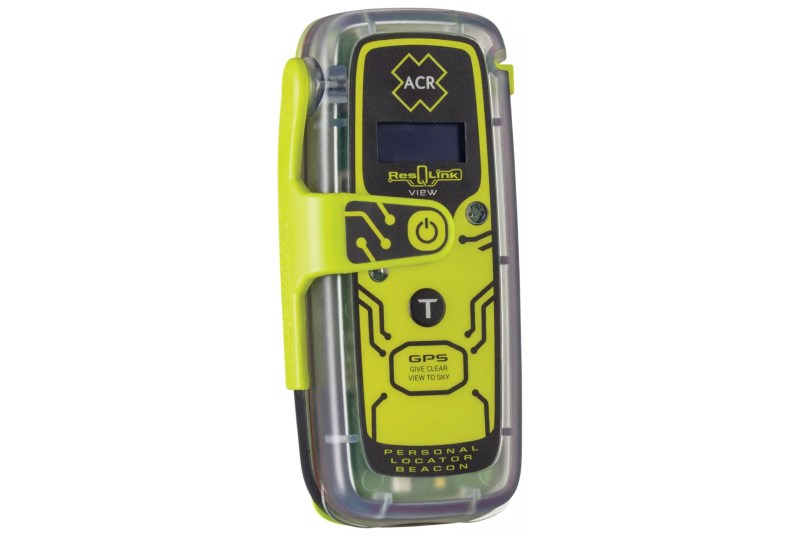Small as a cellphone and costing less than $400, personal locator beacons should be required equipment for every mariner working on U.S. vessels.
That’s been the insistent position of the National Transportation Safety Board since its joint investigation with the Coast Guard into the El Faro disaster of 2015.
The cargo vessel sank in hurricane Joaquin off the Bahamas, en route from Jacksonville, Fla., to San Juan, Puerto Rico. All 33 crew were lost; during a week-long search one unidentifiable body was seen, but could not be recovered.
Among the lengthy recommendations out of the NTSB El Faro report, there was this short notation:
“Require that all personnel employed on vessels in coastal, Great Lakes, and ocean service be provided with a personal locator beacon to enhance their chances of survival.”
The NTSB has been louder recently.
The National Oceanic and Atmospheric Administration’s Search and Rescue Satellite Aided Tracking system (SARSAT) relays distress signals from emergency position indicating radio beacons (EPIRBs) that float free and activate when vessels suddenly sink.
Essentially pocket EPIRBs, personal locator beacons signaling to satellite networks can guide rescuers to individual survivors at sea. The NTSB again says it’s time for the Coast Guard to make personal locator beacons (PLBs) mandatory equipment for mariners.
In its latest accident analysis, the agency recounts one more example when the Maine groundfish trawler Emmy Rose sank suddenly with her crew of four in November 2020. None of the four men were found. The NTSB reiterated its call for the Coast Guard to require personal locator beacons to be carried by commercial fishermen and other mariners.
Coming after the El Faro cargo ship disaster in 2015 with 33 lost, and the 2019 Scandies Rose fishing vessel sinking in Alaska with five lost, the Emmy Rose was the latest example of how PLBs could have led rescuers to missing mariners, NTSB officials say.
“It shouldn’t take three marine tragedies to recognize the vital importance of personal locator beacons,” said NTSB Chair Jennifer Homendy in a statement announcing the Emmy Rose report. “Given their wide availability and relatively low cost, I urge all fishing vessel operators to provide crewmembers with PLBs today – don’t wait for a mandate from the Coast Guard. If the Emmy Rose crew had access to these devices, perhaps some of them would still be with us today.”
Just days before the Emmy Rose report, the NTSB released one with a happier ending.
The Hawaii-based longliner Blue Dragon was fishing for swordfish and tuna about 350 miles off the coast of California at 11:30 p.m. Nov. 9, 2021, when a suspected electrical fire erupted in the wheelhouse.
A National Marine Fisheries Service observer was on board, and happened to go into the wheelhouse as the fire started. He alerted the captain and crew. They tried to fight the flames spreading rapidly through the wheelhouse woodwork, but had to abandon ship.
They were able to get the Blue Dragon’s life raft and EPIRB ready to deploy. The observer went to his berth to retrieve a bag with his NMFS-issued survival suit, EPIRB, PLB, and satellite emergency notification device (SEND), a Garmin inReach. He used the SOS button on the Garmin and texted a “fire” message, manually activated the Blue Dragon’s EPIRB and his own PLB.
Alerts from the emergency locator devices began coming into Garmin’s International Emergency Response Coordination Center in Montgomery, Texas, and the Coast Guard Rescue Coordination Center in Alameda, Calif. The Garmin center contacted the Coast Guard with the observer’s SEND text information - the first indication there was a fire.
The NTSB says the beacons played a critical role in the survival and speedy rescue of the Blue Dragon crew after the fire cut off their wheelhouse communications and knocked out vessel power, the report notes.
The 623-foot Portugal-flagged bulk carrier NordRubicon, en route from Vietnam and located 80 miles northwest of the beacons’ location, diverted to assist at the Coast Guard’s request and brought the Blue Dragon’s crew on board to continue to California.
The NOAA satellite rescue network has been racking up more success stories as the technology becomes more affordable, with PLBs now commonly available at outdoor equipment retailers.
During 2021, alerts from EPIRB and PLB devices resulted in 330 U.S. lifesaving rescues, according to NOAA. Among those cases, 195 were water rescues, 29 were from aviation incidents and 106 responded to emergencies on land. Alaska had the most SARSAT rescues with 55, followed by Florida with 52 and California with 37.








